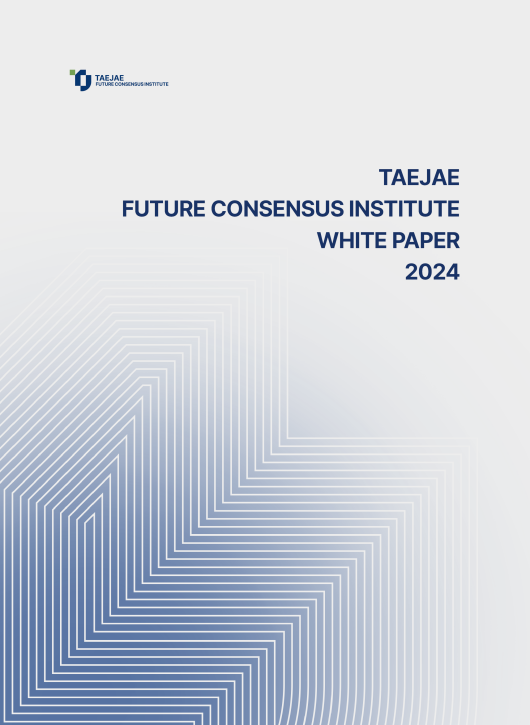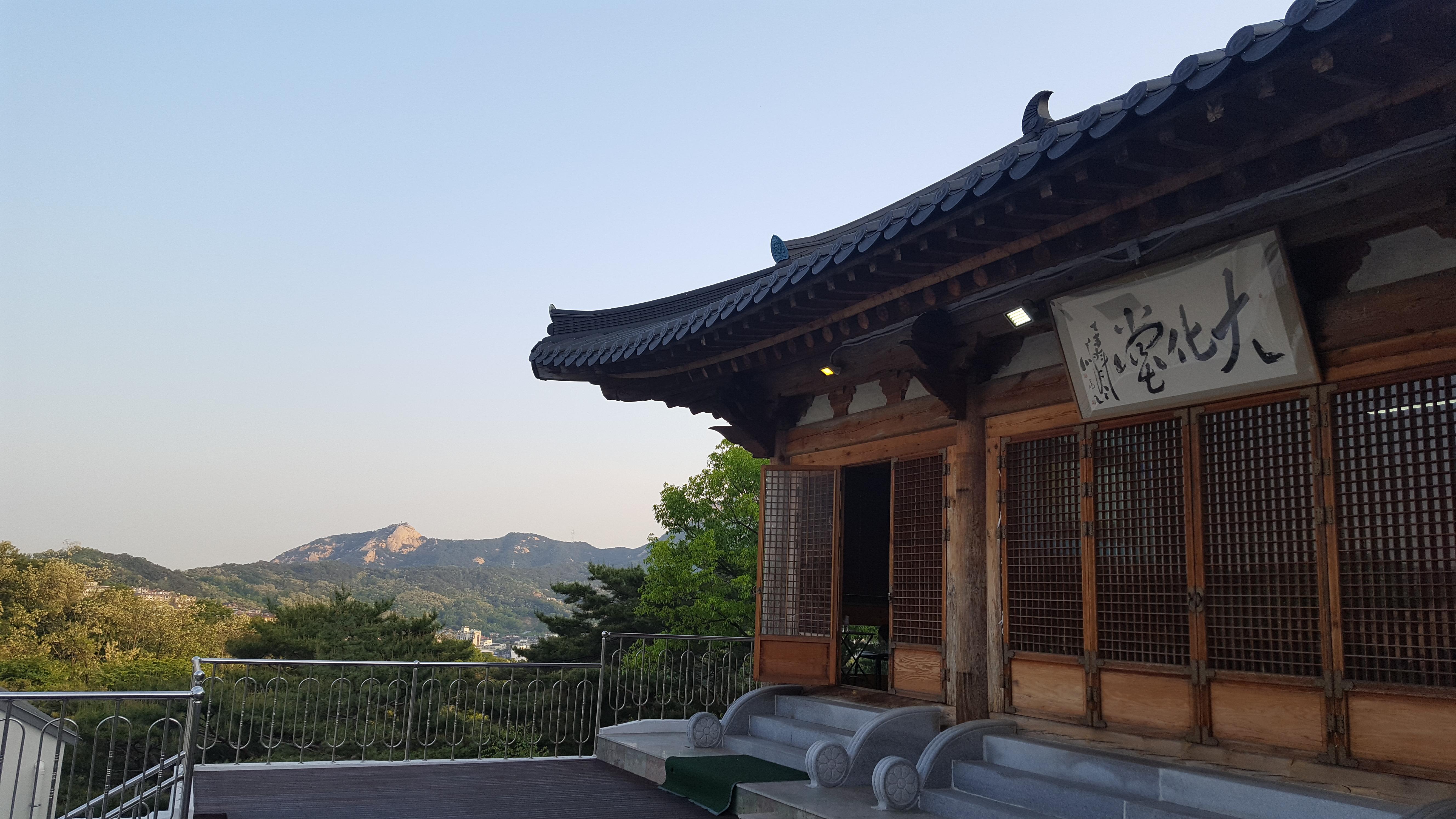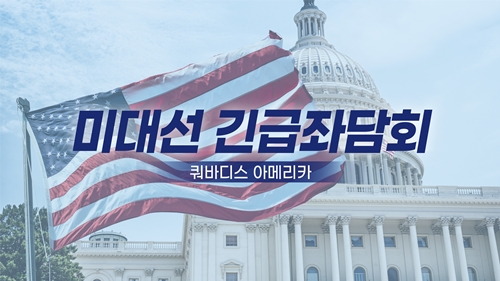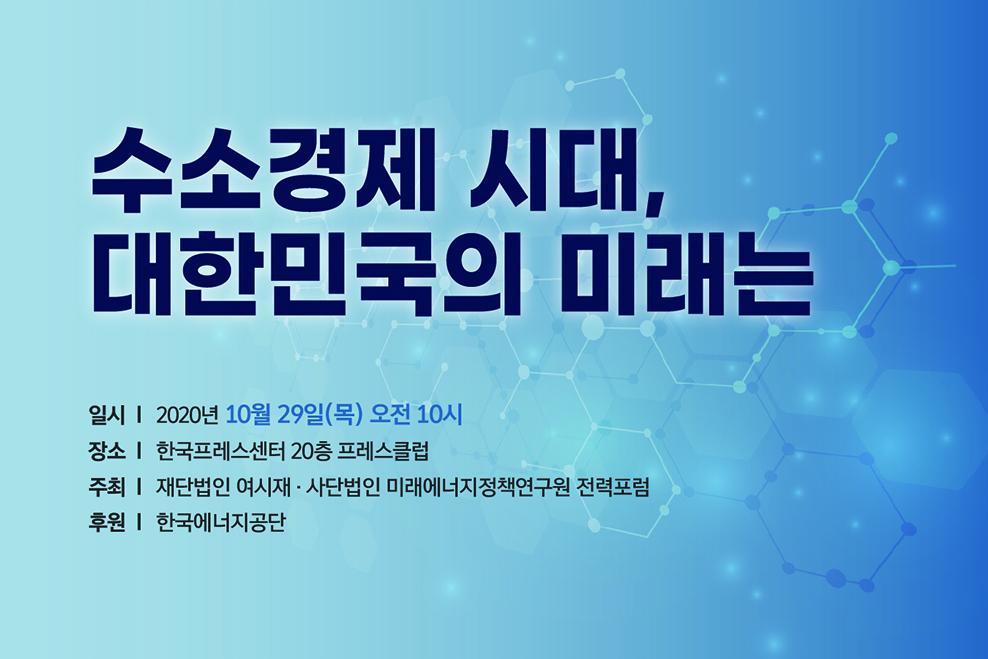Please join Yeosijae as we build a brighter future for Korea. Create your account to participate various events organized by Yeosijae.
- Insights
- |
- Global Order and Cooperation
[The Biden Era: South Korea’s Strategy ③] March and April will be the key months to facilitate US-DPRK dialogue
North Korea will not give up denuclearization talks
Turning Tokyo and Beijing Olympics into an opportunity to foster peace in Northeast Asia
Four years of Trump has changed many things. Amongst them, U.S. policy towards North Korea also experienced a dramatic shift to a ‘top-down’ approach. However, Biden’s victory in the 2020 presidential elections signals that another change is ahead for the U.S.-DPRK relations.
Against this backdrop, Yeosijae prepared a series of articles that examine changes that may occur in the Biden era in U.S. foreign policy, U.S.-DPRK relations, U.S.-China relations, and U.S. trade policy and discuss South Korea’s responses. In the Korean version of “The Biden Era: South Korea’s Strategy” series, we examined the current state of affairs, U.S. foreign policy, U.S.-China conflict, U.S.-North Korea relations, and trade policies. Of the five areas, we selected three to share with our international readers.
In the first two parts, we reviewed the challenges ahead for the Biden administration and South Korea’s public diplomacy strategy. In this third and last part, Senior Advisor of the Institute for National Security Strategy Seong-Ryoul Cho shares his predictions of US-DPRK relations in the Biden era and discusses South Korea’s role in the peace process for the Korean Peninsula.
Table of Content
1. Current state of affairs
2. Foreign policy
3. US-North Korea relations
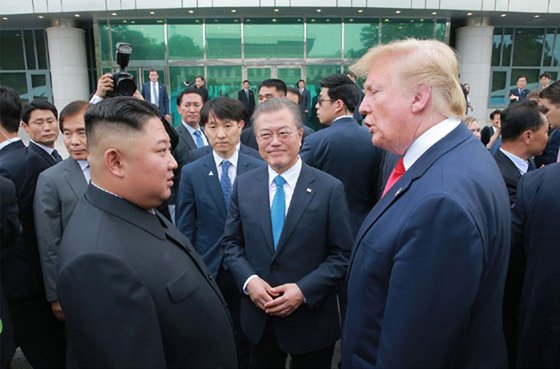
at Panmunjom, June 2019. (Source: Rodong Sinmun=Newsis)
1. The Legacy of the Trump Era and the New Biden Era
Biden will not be free from Trump’s lasting legacy on America’s Policies
However, he has left doors open for a U.S.-North Korea summit
After four eventful years, the Trump era is finally over, and the world is on the cusp of the new Biden era. There are speculations that Biden has already started erasing Trump’s legacy in foreign policy, stemming from the fact that the president-elect’s foreign policy team is composed of members that have been critical of President Trump. This has drawn attention to the future of U.S. policy towards the Korean Peninsula, especially towards North Korea, and what implication the new stance will have on the Korean Peninsula peacebuilding process.
During the race for the White House, President-elect Joe Biden was sharply critical of President Trump’s foreign policy. As a matter of fact, President Trump spent his presidency deepening North Korea’s mistrust of the U.S. and strengthening the North’s relationship with China by appointing one of the most hawkish officials, John Bolton, as his national security advisor after the announcement of the first summit, abandoning the Iran Nuclear Deal, and canceling a proposed summit after North Korea demolished one of its nuclear sites. The second summit also ended in failure as Trump was preoccupied with Michael Cohen’s testimony before the U.S. House of Representatives’ Oversight and Reform Committee. In short, Trump allowed his political aspirations to get in the way of the once-in-a-lifetime opportunity.
Trump administration’s legacy will continue to impact U.S. policy towards North Korea in the Biden era. Since the previous administration was able to bring North Korean leader Kim Jong-Un out of the shadows and back to the negotiating table with a “top-down” approach, Biden also remains open to the possibility of another summit with the North. However, he has slammed Trump before for justifying and elevating the North Korean dictator’s status with the summits. In short, though the Biden administration plans to put more weight on working-level talks, it is willing to consider a Biden-Kim summit on the premise that the North reduces its nuclear capacity.
The US-DPRK Joint Declaration and tentative agreements formed in the Trump era will also act as guideposts for the new administration. Through the Singapore agreement, the two leaders agreed to: normalize US-DPRK relations, build a peace regime in the Korean Peninsula, denuclearize the region, and conduct excavation and repatriation of the remains of American soldiers. Though they failed to materialize, working-level negotiations ahead of the 2nd summit also resulted in a tentative deal to: declare peace, repatriate additional remains of American soldiers, install a joint liaison office, halt the operation of nuclear facilities of Yongbyon, and provide partial sanctions relief to enable joint economic projects between the U.S. and South Korea.
Biden’s consistent goal: a Denuclearized North Korea
Biden’s long-time goal for Pyongyang has been to “denuclearize North Korea.” He has promised to lend strength to the negotiation team and work closely with allies, China, and other stakeholders to advance his goal. He has also pledged to follow up on the progress made on nuclear nonproliferation and security and introduce a new arms control arrangement. Through these actions, the president-elect sets the new administration to adopt a realistic policy goal that keeps the ambitions to denuclearize North Korea as a long term goal while it conducts nuclear negotiations and strengthen military deterrence to reduce the North Korean nuclear threat.
Negotiating for a gradual and phased nuclear disarmament deal
that resembles the Joint Comprehensive Plan of Action (JCPOA)
The Biden administration believes international cooperation and steady pressure on North Korea is necessary to bring the regime back to the negotiating table. And if Pyongyang decides to resume talks, the administration plans to pursue a gradual and phased nuclear disarmament deal, instead of the Trump-style package deal, using the Joint Comprehensive Plan of Action (JCPOA) as a blueprint. They intend to use a “step-by-step” approach with North Korea as it would be much more challenging to remove nuclear capacity from a nation with a well-developed nuclear arsenal in a short period of time, unlike Iran that was in the early stages of its nuclear program.
Though Biden prefers multilateral negotiations, it is unlikely that the new administration will restore the China-led six-party talks. Moreover, it is possible that North Korea, which takes upon itself to be a nuclear-armed state, would be reluctant to have non-nuclear states like South Korea and Japan participate in these multilateral dialogues. From this perspective, it can be assumed that the Biden administration will restore the tripartite talks between South Korea, the U.S., and Japan, instead of the six-party talks, to bolster cooperation between allies and leverage the U.S.-China relations to put pressure on North Korea to make good on its promises. However, the final agreement could involve the six parties as it had been with the Iran Nuclear Deal and P5+1.
The Biden administration has reiterated its position that United Nations Security Council sanctions on North Korea will remain in place until Pyongyang abandons all nuclear and missile programs. However, it has also suggested that it could partially lift some of the sanctions, on the condition of a snapback clause, if North Korea were to dismantle a part of its nuclear program. Moreover, the new administration has stated that it will continue to mount pressure on the regime for its human rights violations and provide humanitarian support for North Koreans, irrespective of the progress on denuclearization.
cf. Snapback Clause
The clause allows the signatories of the Joint Comprehensive Plan of Action (JCPOA) to “snap back” sanctions against Iran in case of non-compliance.
2. Korean Worker’s Party’s 8th Congress and a New National Strategy

North Korea is likely to maintain its military policy and focus on building national defense capacity
With the Korean Worker’s Party’s 8th Congress set to be convened in January 2021, there is a growing interest in what changes will be made to North Korea’s national strategy as it will have profound implications for the Korean Peninsula peace process. Though there were speculations that the meeting could be delayed due to COVID-19, Korean Central News Agency announced that the 4th session of the 14th Supreme People’s Assembly (SPA) will be held in late January and thereby increased the chance of a congressional meeting in January, as scheduled.
In all likelihood, North Korea will keep its military strategy and focus on developing the nation’s self-defense capacity. On June 12, North Korea’s Foreign Minister Ri Son-Gwon stated, “our strategic goal is to build a more reliable force to counter the long-term threats from the U.S.,” and on July 4, First Vice Foreign Minister Choi Sun-Hee echoed his message, that the North is “developing a detailed plan to deal with the long-term threat from Washington.”
Chairman Kim also struck a similar note during his speech at the 6th National Conference of War Veterans on July 27, when he stressed that the country would know “no more wars thank to (its) reliable and effective self-defense nuclear deterrence.” During the military parade to commemorate the 75th anniversary of the ruling party, he also announced that the country has “built the strongest military capability of safeguarding peace, which to… allow people to enjoy the benefits of prosperity, eternally free from war,” and added that North Korea’s military capacity is “changing in the rate of its growth and in its quality and quantity in (its) own style and in accordance with (North Korea’s) demands and timetable.” As these examples show, North Korea has already expressed its intentions to maintain its current military strategy.
North Korea’s Economic Policy of Self-Reliance
Now faces the triple threat of U.N. Sanctions, COVID-19, and Floods
Another aspect to examine ahead of the congressional meeting in January is North Korea’s economic policy. Pyongyang has emphasized “self-reliance” to achieve the goal of “economic independence,” but with the fall of the world socialist system restricting the supply of subsidized oil and machinery and equipment, it faced the limitations of its economic policy. North Korea has since tried to leverage denuclearization to ensure the security of the regime and integrate the North Korean economy into the global value chain, but with the failure of the second summit between Trump and Kim Jong-Un, it has returned to its old policy of self-reliance.
Following the U.N. ban on North Korean overseas workers and the expiration of the December 22 deadline, North Korea declared during the 5th Plenary Meeting of the 7th Central Committee that it will power through the sanctions with economic development. It seemed that North Korea intended to adopt the Cuban-model of reforms to develop its tourism sector and counter sanctions on remittances from the overseas workforce. In fact, North Korea invested in three state projects that aimed to attract foreign tourists and worked to develop the Samjiyon Tourist Complex, Wonsan-Kalma Coastal Tourist Zone, and Yangdok Hot Springs Tourist Area.
‘Juche’ will only work if North Korea can mitigate supply shortages
North Korea closed its borders with China in early 2020 when COVID-19 began to spread across the world, and with flood damages from a typhoon, the North Korean economy is facing a triple whammy of crises (sanctions, pandemic, flooding). Particularly, when the tourism sector began to suffer from the damages, North Korea postponed its plans to develop the sector and began to highlight the construction of Pyongyang General Hospital instead as a flagship project to commemorate the 75th anniversary of the ruling party. Despite the shift in focus, the hospital was not completed on time. Ultimately, North Korea was forced to acknowledge the failures of its 5-year Economic Development Strategy.
However, North Korea placed tighter controls on border security, and as a result, its trade with China (which had accounted for 98% of its foreign trade) between January and October 2020 plummeted to 530 million dollars, roughly a fourth of the figure from the previous year. In particular, trade volume in October decreased by 99.4%, indicating that bilateral trade has essentially come to a halt. Now, North Korea is conducting a new economic experiment that embraces the market economy, bans the use of dollars, and promotes the use of the North Korean currency (won). However, for the experiment to be a success, the North must first mitigate supply shortages. For this reason, North Korea is waging an “80-day battle” to boost production and attain its goal.
North could strengthen economic ties with China to prepare for a long battle with the U.S.
However, it is doubtful whether North Korea’s initiative to boost the domestic economy would succeed due to the country’s heavy reliance on imported energy and capital goods. Consequently, we must be wary of the North strengthening its economic ties with China to prepare for a long battle with America. Currently, China has offered two ways to strengthen their economic ties— and they involve China’s dual-circulation economic strategy and China-North Korea Two River Economic Belt initiative.
The dual circulation economic strategy is China’s latest economy roadmap unveiled at the fifth plenary session of the 19th Central Committee of the Communist Party of China (CPC). It consists of two strategies that aim to drive growth through a greater emphasis on domestic demand, or internal circulation, and foster technological innovation through international collaboration, or international circulation, with countries like South Korea and Japan on high-value cutting-edge technology industries and Eastern Europe, the ASEAN, and North Korea on the production of low-value goods. If North Korea becomes a part of China’s plan, it could become one of the main destinations for outsourced manufacturing in the new China-centric global value chain.
The China-North Korea Two River Economic Belt initiative is China’s pilot project established as part of the ongoing efforts to build a seventh economic corridor with Northeast Asia. The six corridors of the Belt and Road Initiative (BRI) aim to increase connectivity with major economic regions through railway and road construction projects and other components related to the supply chain. By building railways and roads in the northeast region, China is working to establish networks with North Korea.

in June 2018. (Source: Rodong Sinmun)
In a congratulatory message to Kim Jong-Un for the 75th anniversary of North Korea’s ruling party, Chinese President Xi Jinping said he hopes to “make contributions to regional peace, stability, and development.” Furthermore, in a letter to respond to North Korea’s congratulatory messages for the 71st anniversary of the founding of China, he wrote, “we… are willing to provide better welfare and propel regional peace, stability, and development.” As these examples illustrate, China seems to be hoping that humanitarian support and regional development will facilitate the integration of North Korea into the new global value chain and regional economy.
Seeking for a new solution to propel the Korean Peninsula Peace Process
For as long as the tight restrictions imposed by the U.N. sanctions remain, China’s ambitions for North Korea will be impossible to materialize. However, North Korean officials have developed concerns about the country’s dependence on China, and with their careful approach to the U.S. election results and orders to the North Korean embassies in foreign countries to “avoid stirring any tensions with the U.S.,” it seems that the North is yet to write US-DPRK dialogues off the table. Consequently, it can be derived that the regime also remains optimistic about joining the global economy through denuclearization negotiations, regardless of the announcements that will be made in the 8th Party Congress.
However, with uncertain prospects of another summit meeting, the North Korean regime is likely to highlight domestic-oriented “self-reliance” economic policy in the upcoming party meeting. And as the country makes efforts to bolster its domestic economy, it would be difficult for the Korean Peninsula Peace Process, which had been comprised mostly of denuclearization negotiations, to advance until a new solution emerges.
3. The Prospects of the Korean Peace Process and South Korea’s Role
North Korea will expand its nuclear capacity to strengthen its bargaining power and build deterrence against the U.S.
As examined earlier, North Korea is expected to announce during the KWP’s 8th Congress that it will continue to strengthen its nuclear deterrence and pursue a self-sufficient economy. The decision to expand its nuclear arsenal despite the difficult economic conditions comes under careful calculations that it can increase the regime’s leverage against the U.S. in negations while it also builds deterrence against America in case negotiations break down.
North Korea’s decision to focus on the domestic economy in its new 5-year strategy is based on the assumption that it would take a considerable amount of time for U.N. sanctions to be lifted, as it remains uncertain when US-DPRK dialogues will resume and reach an agreement. However, self-reliance can only sustain the country, not lead to growth and prosperity. For this reason, North Korea will not easily give up on denuclearization negotiations with the U.S.
In this vein, it is unlikely that North Korea would conduct nuclear or long-range missile tests in the spring of 2021. More than anything, it is possible that Pyongyang has high hopes for the incoming Biden administration. The three crises of sanctions, pandemic, and flooding also help minimize North Korea’s provocations by forcing the regime to focus on stabilizing the situation within their borders.
The U.S. could return to ‘strategic patience’ or refuse to withdraw its ‘hostile policy’ towards North Korea if in the case of a military provocation
Though the prospect remains relatively low, we cannot completely overlook the possibility of North Korean military provocations and a subsequent return to “strategic patience” on the part of the American government. As Biden’s foreign policy team faces delays in transition and as the administration struggles to handle various pressing domestic and international issues, North Korea is likely to fall behind in America’s agendas. The U.S. could also refuse North Korea’s demand to drop its “hostile policy” against Pyongyang.
If US-ROK military exercises, which were downsized in August due to COVID-19, were to return in full scale in March, there is a possibility that it could spur North Korea to take action. Provocation from North Korea could subsequently push the Biden administration to return to the policy of “strategic patience,” like the Obama period, and take a hardline approach to North Korea by conducting large-scale military drills, on top of the joint military exercises, and deploying strategic assets on the Korean Peninsula.
It may also prompt other countries, such as China and Japan, to adopt strict measures against North Korea. China could clamp down on smuggling activities near the border and reduce or stop the export of refined petroleum and crude oil to North Korea. As for Japan, it will not be able to take immediate actions against the North due to the Tokyo Olympics; however, if COVID-19 and North Korea’s provocations cancel the Olympics, it could throw all the blame on the North, restart the discussion on acquiring offensive military capability, and pursue other anti-North Korean policies.
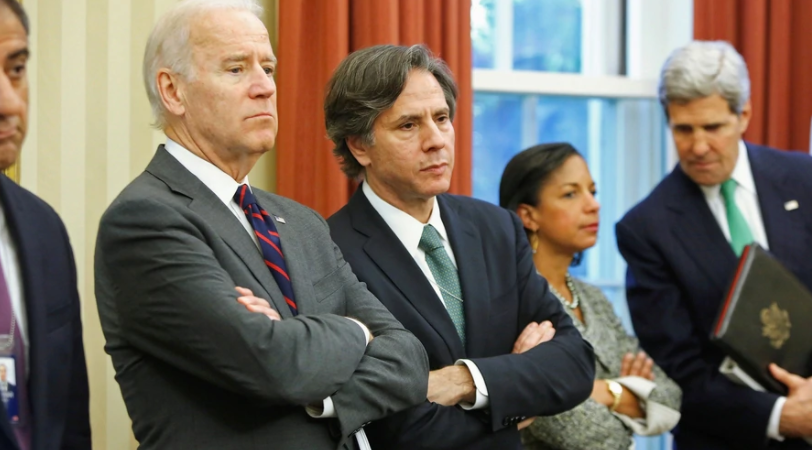
Key questions for the future of US-DPRK relations:
1. How will the U.S. respond to North Korea’s demand that Washington ends its hostile policy?
2. What measures will the U.S. take to demonstrate that it has put an end to its hostile policy?
3. When will the U.S. drop its hostile policy against the North?
On July 10, Kim Yo-Jong, the First Vice Department Director who oversees North Korean policy towards the U.S. and South Korea, announced what could be summarized as Pyongyang’s “doctrine” against Washington. In a lengthy statement, she discussed North Korea’s stance on security guarantees, capacity-based military strategy, the “No First Use” policy, and the denuclearization process. Of the statements, two components particularly stand out for their implications on the Korean Peninsula Peace Process: (1) America’s “hostile policies” and the possibility of another talk, and (2) North Korea’s demand for corresponding measures to its denuclearization efforts.
There are three key elements that will determine the future of US-DPRK relations. First, will Washington respond to the demand to drop “hostilities” towards the North to resume dialogue? Second, if America does accept its terms, what actions will follow to show that it has dropped its hostilities? Lastly, when will these actions be taken?
First and foremost, there is a possibility that the Biden administration will focus on resolving pressing domestic issues and avoid giving an immediate response to North Korea’s demands. In fact, Biden’s top priorities listed on his transition page are COVID-19, economic recovery, racial equity, and climate change. Moreover, there is a chance that Washington’s reply will be further delayed since the appointment confirmation process for the Assistant Secretary of State for East Asian and Pacific Affairs often occur around June.
Second, we must examine what answers could come from America. Based on the principle that South Korea should be involved in the process, President Moon Jae-In offered a symbolic, reversible solution during the U.N. General Assembly Meeting on September 23, to “declare an end to the Korean War” as a sign of non-hostility. However, if the U.S. explores options that do not involve South Korea, it could offer to construct a joint liaison office between the North and the U.S., ban the deployment of nuclear assets on the Korean Peninsula, and halt military exercises during negotiations.
Third, there is the question of when to present these options to North Korea. There are many things scheduled for next year, including the US-ROK joint military exercise in March, the South Korean by-election in April, Tokyo Olympics in between late July and early August, and the Japanese general election in October. Thus, if America’s response is delayed, there could be another strategic provocation from North Korea, and this would impede US-DPRK dialogue for a considerable time. As illustrated, the timing of America’s response will be just as important as its content.
“Self-reliance” economic policy could hamper the Korean Peninsula Peace Process
If the new U.S. administration adopts a bottom-up approach to the negotiations and North Korea locks its borders and expands its self-reliance policy, it will not be easy to resume the Korean Peninsula Peace Process. In fact, it could lead to development in a different direction. Against this backdrop, the South Korean government should avoid taking a passive stance on the matter and play an active role in facilitating dialogue between the U.S. and North Korea and restart the engines for the Korean Peninsula Peace Process.
March and April of 2021 will be the critical months;
South Korea should convince America to engage with North Korea
March and April of 2021 will be a critical juncture for the Korean Peninsula Peace Process. It is imperative that the Biden administration conveys its willingness to conduct a dialogue with North Korea during this period. An Assistant Secretary of State for East Asian and Pacific Affairs, who will oversee the administration’s policy on the Korean Peninsula, will not be appointed until June. South Korean government will have to push Washington to promptly appoint a U.S. Special Representative for North Korea, which does not need approval from Congress, to begin communications with the North.
We should consider providing timely assistance to improve relations
Providing humanitarian aid, such as food and fertilizer, during the lean spring season or sharing COVID-19 vaccines with North Korea could foster a mood for reconciliation. As a direct measure, Washington could delay the joint military exercise scheduled for March or promise to keep strategic assets out of the Korean Peninsula. The establishment of a joint liaison office between Pyongyang and Washington can also convey the message that America is willing to restore relations.
As for South Korea, elections will be its overriding focus in the coming days due to the by-election in April and presidential elections on March 9, 2022. If the conditions are met and Korean Peninsula Peace Process regains momentum, parties will have to reach an agreement on the definition of denuclearization and its roadmap, according to the Biden administration’s gradual, phased nuclear deal approach. While the two Koreas and US-DPRK are in negotiations, they will also have to agree to refrain from making military provocations, both large and small.
Fostering a mood for peace with the Olympics
There is no telling how the COVID-19 situation will unfold in the future. Regardless, with the general elections coming up in September, the Suga administration will do whatever it takes to host the Tokyo Olympics. Optimistically, the Tokyo Olympics and Paralympics will be held between July 23-August 8 and August 24-September 5, while Beijing Olympics will take place in February 2022. The South Korean government must leverage this opportunity provided by the two consecutive Olympics to actively foster a mood for peace in the Northeast Asian region.
As an agreement to ensure the safety of athletes and spectators and discourage violent actions such as terror and war, the U.N. General Assembly adopted Olympic Truce for the Tokyo 2020 Games. The resolution particularly stands out, as it noted that the sequence of Olympics hosted by South Korea, Japan, and China will strengthen the relations between the three Asian countries. To ensure the success of the Tokyo Olympics, the South Korean government must urge Japanese leaders to meet with North Korean leaders, allow North Korean ships to enter the country for the Olympics, and ease regulations on pro-North Koreans in Japan.
2021 will be the year that will determine the course of the Korean Peninsula’s future. Moreover, South Korea could also face internal division over its policy towards North Korea due to the by-elections in April and presidential elections in March 2022. Under these circumstances, we must endeavor to make progress in March and April to restore US-DPRK dialogue and leverage Tokyo and Beijing Olympics to create favorable conditions to build a peace regime on the Korean Peninsula. It is solely up to our foreign policy and security capacity to facilitate peace in a new domestic and international environment.
|
Seong-Ryoul Cho is an expert on Korean Peninsula security, defense, and South Korea-Japan relations. |
This text was originally published on Yeosijae’s Korean homepage on December 9, 2020.
< Copyright holder © TAEJAE FUTURE CONSENSUS INSTITUTE, Not available for redistribution >

